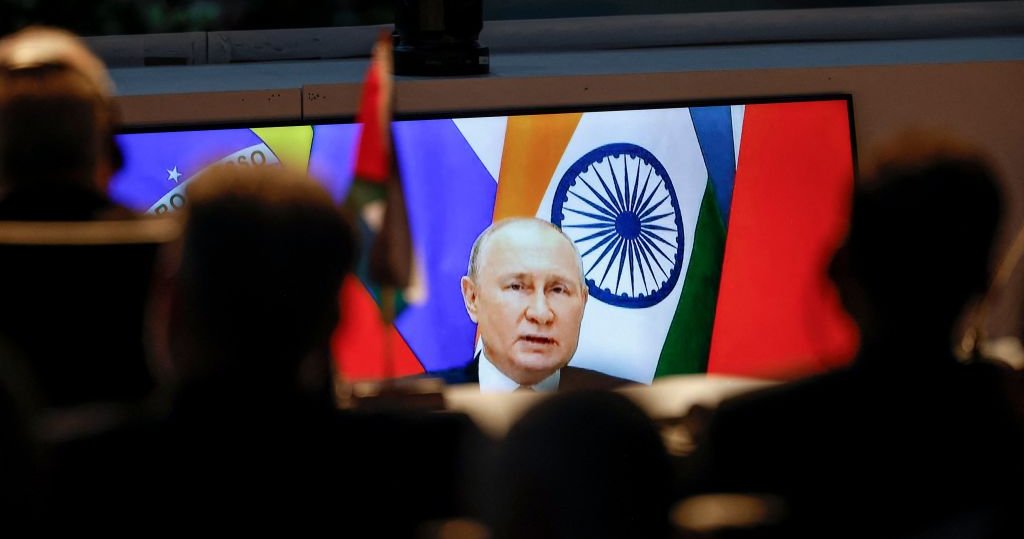Analyzing Putin's War-Focused Economic Strategy In Russia

Table of Contents
The Impact of Western Sanctions on the Russian Economy
The unprecedented wave of Western sanctions imposed on Russia following the invasion of Ukraine represents a key element in understanding Putin's war-focused economic strategy. These sanctions, targeting the financial, technological, and energy sectors, aim to cripple the Russian economy and limit its ability to finance the war. The impact of these sanctions has been multifaceted and far-reaching.
-
Overview of Sanctions: Sanctions encompass a wide range of measures, including the freezing of Central Bank reserves, the exclusion of major Russian banks from the SWIFT international payment system, restrictions on technology imports crucial for various sectors, energy price caps and embargoes on Russian oil and gas, and targeted sanctions against individuals and entities.
-
Impact on Key Sectors: The immediate impact was felt most acutely in the financial sector, with the ruble plummeting and capital flight escalating. The energy sector, while initially benefiting from high global prices, has faced increasing challenges due to the EU's phased-out reliance on Russian gas. The technology sector has been severely hampered by restrictions on imports of critical components and software.
-
Sanctions Evasion: Russia has actively sought to circumvent sanctions through various methods, including utilizing third-party countries for trade, engaging in barter agreements, and developing alternative payment systems. The effectiveness of these evasion tactics remains a subject of ongoing debate and analysis.
-
Effectiveness of Sanctions: While the full long-term impact of sanctions remains to be seen, some indicators suggest they have significantly impacted Russia's economic growth, constrained its access to crucial technologies, and increased its reliance on domestic production. However, the Russian economy has shown greater resilience than some anticipated, highlighting the challenges of effectively isolating a major global economy.
-
Bullet Points:
- Freezing of Central Bank reserves significantly limited Russia's access to foreign currency reserves.
- Exclusion from SWIFT disrupted international transactions, impacting trade and financial flows.
- Restrictions on technology imports hindered Russia's ability to maintain and upgrade its technological infrastructure.
- Energy price caps and embargoes have impacted Russia's energy exports, a crucial revenue source.
- Sanctions evasion is an ongoing challenge, complicating the assessment of sanctions’ overall effectiveness.
Import Substitution and Domestic Production in Russia
Facing stringent sanctions, the Russian government has doubled down on its import substitution strategy, aiming to reduce reliance on foreign goods and technology. This initiative involves bolstering domestic production across various sectors, from agriculture to manufacturing.
-
Push for Import Substitution: The war has accelerated the existing push for import substitution, making it a cornerstone of Putin's economic strategy. The focus has been on increasing self-sufficiency in essential goods and technologies.
-
Successes and Limitations: While some progress has been made in certain areas, particularly in agriculture, the strategy faces significant challenges. The rapid development of domestic production capabilities requires substantial investment, technological expertise, and access to global supply chains – all of which are severely constrained by the ongoing sanctions.
-
Challenges in Rapid Development: Russia lacks the technological capacity and expertise in many key sectors to quickly replace imported goods and services. This necessitates a long-term investment that may not yield immediate results and could lead to lower quality and higher prices for domestically produced goods.
-
Long-Term Economic Viability: The long-term economic viability of the import substitution strategy hinges on its ability to achieve significant gains in productivity and efficiency to compete with international markets, something which requires extensive and sustained effort.
-
Bullet Points:
- Increased investment in domestic manufacturing plants.
- A focused effort toward achieving agricultural self-sufficiency.
- Challenges in acquiring advanced technologies due to sanctions.
- Growing dependence on limited domestic resources and restricted access to international markets.
Resource Mobilization and War Financing in Russia
Financing the ongoing war in Ukraine necessitates a massive mobilization of Russia's resources. The Kremlin has employed various methods to fund its military operations, impacting the Russian budget and long-term economic growth.
-
War Financing Mechanisms: The war effort is financed through increased taxes, increased borrowing both domestically and internationally (where possible), the sale of state assets, and, most importantly, continued reliance on energy exports despite sanctions.
-
Impact on the Budget: The substantial increase in military spending has placed immense strain on the Russian budget, diverting resources from social programs, infrastructure development, and other crucial sectors.
-
Implications for Long-Term Growth: The prioritization of military expenditure over investments in human capital and infrastructure may have severe long-term consequences for Russia's economic growth potential.
-
Sustainability of Resource Mobilization: The sustainability of current resource mobilization methods is questionable, especially in the face of ongoing sanctions and decreased global demand for Russian energy.
-
Bullet Points:
- Significant increases in taxes, affecting various income brackets.
- Increased domestic and (limited) foreign borrowing to fund the war effort.
- Sale of state assets to generate revenue.
- Continued reliance on energy exports despite sanctions.
- Reduced investment in social programs and infrastructure.
Long-Term Economic Outlook for Russia
The long-term economic outlook for Russia remains highly uncertain and depends significantly on the duration and outcome of the war in Ukraine and the overall effectiveness of Putin's economic policy.
-
Post-War Economic Recovery: The potential for a swift economic recovery after the war is limited, given the considerable damage already inflicted on the economy by the conflict and the prolonged impact of sanctions.
-
Long-Term Impacts: The war’s long-term impact will likely include sustained economic contraction, challenges in attracting foreign investment, a persistent need for economic diversification beyond energy exports, and the ongoing consequences of brain drain and capital flight.
-
Economic Diversification: Russia faces the daunting challenge of diversifying its economy beyond its heavy reliance on energy exports to ensure more sustainable long-term growth. This will require substantial investment in other sectors and a move away from the current model.
-
Future Economic Growth: Future economic growth will be constrained by a number of factors, including limited access to technology, a shrinking workforce, and an increasingly isolated position in the global economy.
-
Bullet Points:
- Potential for a prolonged period of economic contraction.
- Significant challenges in attracting foreign direct investment.
- The urgent need to diversify the economy away from its energy dependence.
- Long-term consequences of a skilled labor shortage due to emigration.
Conclusion
This analysis has highlighted the multifaceted and complex nature of Putin's war-focused economic strategy. While import substitution and resource mobilization efforts demonstrate a degree of resilience, the impact of stringent sanctions and the enormous costs of the war pose significant long-term economic challenges for Russia. The effectiveness of these sanctions continues to be debated and analyzed. The future economic trajectory of the country remains highly uncertain, dependent on the duration of the conflict and the implementation of effective economic reforms.
Call to Action: Understanding Putin's war-focused economic strategy is crucial for navigating the evolving geopolitical landscape. Continue to follow expert analysis on Russia's economy and its implications for global markets to stay informed about the evolving situation of this economic warfare. Further research into Putin's economic policy and its consequences is essential for informed decision-making in the international community.

Featured Posts
-
 A24s Bring Her Back Trailer And First Look At New Horror Film
May 29, 2025
A24s Bring Her Back Trailer And First Look At New Horror Film
May 29, 2025 -
 Analyse Opvallende Namen Bij Ajax Kroes En Simonis In De Schijnwerpers
May 29, 2025
Analyse Opvallende Namen Bij Ajax Kroes En Simonis In De Schijnwerpers
May 29, 2025 -
 The Ultimate Guide To Nike Sneaker Drops In May 2025
May 29, 2025
The Ultimate Guide To Nike Sneaker Drops In May 2025
May 29, 2025 -
 Canadian Aluminum Traders Bankruptcy The Impact Of The Trade War
May 29, 2025
Canadian Aluminum Traders Bankruptcy The Impact Of The Trade War
May 29, 2025 -
 Scary Movie 6 Could Cindy And Brenda Return Thanks To This Horror Trend
May 29, 2025
Scary Movie 6 Could Cindy And Brenda Return Thanks To This Horror Trend
May 29, 2025
